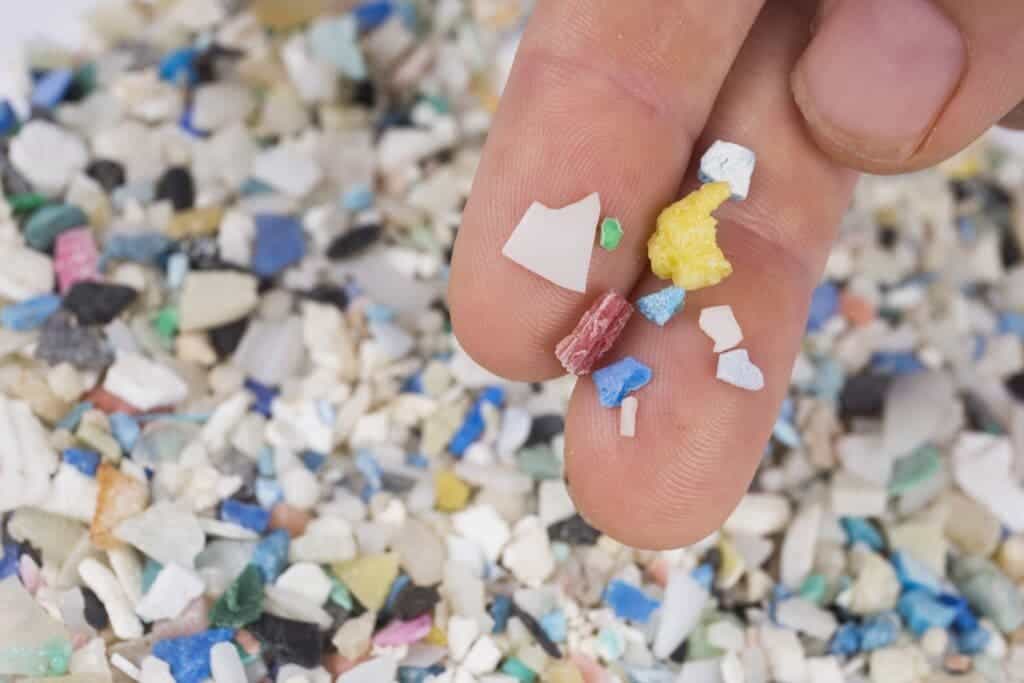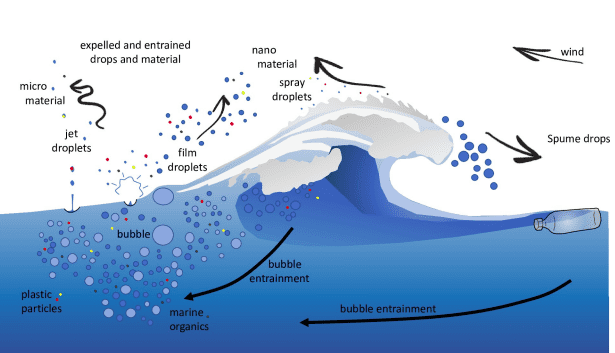Global levels of plastic pollution have been increasing ever since plastic products gained commercial popularity in the 1930s. This has created one of the biggest environmental problems of our time.

While most research has generally assumed that once plastics enter the ocean they are going to stay there, that’s not necessarily the case. A new study suggests that plastic particles can transfer from seawater to the atmosphere and get carried away by the breeze.
Researchers at the University of Strathclyde and the Observatoire Midi-Pyrénées at the University of Toulouse found fragments of plastics in sea spray, suggesting that they are ejected from the seawater in “bubbles”.
“Sea breeze has traditionally been considered ‘clean air’ but this study shows surprising amounts of microplastic particles being carried by it. It appears that some plastic particles could be leaving the sea and entering the atmosphere,” Steve Allen, who co-led the study, told The Guardian.
The “bubble burst ejection” of particles in sea fog or spray, described by Allen “like soda in a glass when it hits your nose”, is a well-known phenomenon. But the new study is the first to show that microplastics are ejected from the ocean through this mechanism. “The ocean is giving the plastic back to us,” Allen said.

Plastic debris, such as plastic bags and bottles, breaks down into smaller microplastic in the sea, often invisible to the eye. The microplastics in sea spray were between 5 and 140 micrometers in size. The researchers estimated that up to 136,000 tons of microplastics could be blown onshore by sea spray every year.
Deonie Allen, the study’s co-research lead, told The Guardian that this was the result of “mismanaged waste that comes from the terrestrial environment”. She said the findings could help answer the question of where “missing” oceanic plastic goes after being dumped into the sea, a mystery scientists have been trying to solve for years.
“The transport mechanism is quite complicated” said Allen. “We know plastic comes out of rivers into the sea. Some goes into gyres, some sinks and goes into the sediment, but the quantity on the sea floor doesn’t match the amount of plastic that would make up this equation. There’s a quantity of missing plastic.”
The researchers captured water droplets from sea spray at Mimizan beach in Aquitaine, on the south-west coast of France using a “cloud catcher” and filters set up on top of a sand dune. They analyzed the water droplets for microplastics, taking samples at various wind directions and speeds.
The marine environment has generally been considered a microplastic sink. Earlier studies have identified plastic moving from cities to rivers, rivers to the sea, and — most recently — atmospheric transport of plastic across terrestrial environments out to sea.
An estimated 8 million tons of plastic enters the sea from land and coasts every year. One study estimates just 240,000 tones floats on the surface, leaving us to wonder where the rest goes. Various plastic ocean transport models have suggested “leaky basins” to explain areas that do not contain the predicted quantities of plastic.
The study was published in the journal PLOS ONE.






